Icing Degree Characterization of Insulators Based on the Equivalent Collision Coefficient of Standard Rotating Conductors
Abstract
:1. Introduction
2. Numerical Calculation of Water Droplets Collision Coefficient
2.1. Definition of the Water Droplets Collision Coefficient
2.2. Establishment and Mesh Generation of Numerical Geometry Model of Water Droplets Collision Coefficient
2.3. The Determination of Boundary Conditions of the Numerical Calculation of Water Droplets Collision Coefficients
3. Results and Analysis of Numerical Simulation of Water Droplets Collision Coefficient
3.1. Results and Analysis of Numerical Simulation of Water Droplets Collision Coefficient on Rotating Conductor
- (i)
- When the wind velocity U or MVD increases and the other remains constant, it will lead to an increase of α1.
- (ii)
- The change regularities of α1 on the rotating conductor under different U appear to be similar. However, the increase trend of α1 slows down gradually with an increase of MVD from 20 μm to 120 μm. This can be explained as follows: with an increase of diameter, water droplets have a weaker following character with the airstream. In such cases, droplets have greater possibilities of maintaining their original trajectories, resulting in a slower increase of α1. Under the same wind velocity, small droplets are more susceptible to airflow than large ones.
3.2. Results and Analysis of Numerical Simulation of Water Droplets Collision Coefficient on Insulator
- (i)
- When the wind velocity U or MVD increases and the other remains constant, it will lead to an increase of α1.
- (ii)
- α1 is different on different regions of the insulator. The numbers of water droplets trapped by the edge of shed and the cap of insulator on the windward side are similar, and both of them are much larger than that of the shed on windward side. Besides, α1 on the shed is almost 2–3 times that on the insulator surface on the leeward side.
- (iii)
- The change regularities of α1 on the windward cap, windward edge of the shed and leeward appear to be similar, but one essential difference can be identified, that is, unlike other regions of the insulator, the change regularity of α1 on the windward shed of the insulator is approximately a straight line.
4. Characterization and Verification of Insulator Icing Degree Based on the Equivalent Collision Coefficient
4.1. Characterization of Insulator Icing Degree Based on the Equivalent Collision Coefficient
4.2. Test Verification and Analysis
- (i)
- The change trends of both the theoretical ratio k1 based on the model proposed in this paper and in [19] are in agreement with the experimental ratio k. With an increase of U and T, the ratio of ice weight on the insulator to ice weight on the rotating conductor decreases.
- (ii)
- The relative error σ1 based on the model proposed in this paper is much smaller than that based on the model proposed in [19]. Comparing with the model proposed in [19], the calculation used in the model proposed in this paper takes the influence of different shapes and diameters in different regions into account, and calculates α1 and α3 in different regions respectively. In such cases, the calculation results based on the model proposed in the paper are more accurate than those of the model proposed in [19].
- (iii)
- The relative error σ1 based on the model proposed in this paper between the ratio k1 and k is less than 15%. Simulation results obtained using the model proposed in this paper are consistent with the experimental results. In test verification, the equivalence of ice weight between insulator and rotating conductor has been established. Hence, if other parameters like wind velocity U, environmental temperature T, α3, LWC (liquid water content) et al. are determined, α1 can be used as the parameter to characterize the ice weight of insulators and rotating conductors.
5. Conclusions
- (i)
- Using Fluent to simulate the icing process of an insulator and a rotating conductor, the simulation results show that when any one of the wind velocity and MVD increases and other environmental parameters remain constant, it would lead to an increase of α1.
- (ii)
- The experimental verification indicates that ice weight on insulator increases with a liner increase of ice weight on rotating conductor, and k (defined as the ratio of ice weight on insulator to ice weight on rotating conductor) decreases with a decrease of either MVD or U.
- (iii)
- (iv)
- In this paper, the equivalent relationship of ice weight between the insulator and rotating conductor is established. Therefore, the method of using ice weight on a rotating conductor to predict that on an insulator based on the model proposed in this paper can be widely adopted.
Author Contributions
Funding
Acknowledgments
Conflicts of Interest
References
- Oikonomou, D.S.; Maris, T.I.; Ekonomou, L. Artificial intelligence assessment of sea salt contamination of medium voltage insulators. In Proceedings of the 8th WSEAS International Conference on Systems Theory and Scientific Computation (ISTASC’ 08), Rhodes, Greece, 20–22 August 2008; pp. 319–323. [Google Scholar]
- Pappas, S.S.; Ekonomou, L. Comparison of adaptive techniques for the prediction of the equivalent salt deposit density of medium voltage insulators. WSEAS Trans. Power Syst. 2017, 12, 220–224. [Google Scholar]
- Farzaneh, M. Insulator flashover under icing conditions. IEEE Trans. Dielectr. Electr. Insul. 2014, 21, 1997–2011. [Google Scholar] [CrossRef]
- Jiang, X.; Xiang, Z.; Zhang, Z.; Hu, J.; Hu, Q.; Shu, L. Predictive Model for Equivalent Ice Thickness Load on Overhead Transmission Lines Based on Measured Insulator String Deviations. IEEE Trans. Power Deliv. 2014, 29, 1659–1665. [Google Scholar] [CrossRef]
- Hu, Q.; Wang, S.; Shu, L.; Jiang, X.; Liang, J.; Qiu, G. Comparison of Ac Icing Flashover Performances of 220 kV Composite Insulators with Different Shed Configurations. IEEE Trans. Dielectr. Electr. Insul. 2016, 23, 995–1004. [Google Scholar] [CrossRef]
- Hu, Q.; Yuan, W.; Shu, L.; Jiang, X.; Wang, S. Effects of Electric Field Distribution on Icing and Flashover Performance of 220 kV Composite Insulators. IEEE Trans. Dielectr. Electr. Insul. 2014, 21, 2181–2189. [Google Scholar]
- Li, Z.; Zhang, Q.; Liu, F.; Jia, H.; Cheng, L.; Xi, H. Discharge propagation along the air gap on an ice-covered insulator string. IEEE T. Plasma Sci. 2011, 39, 2238–2239. [Google Scholar] [CrossRef]
- Emran, S.M.A.; Farzaneh, M. Flashover Performance of Ice-Covered Post Insulators with Booster Sheds Using Experiments and Partial Arc Modeling. IEEE Trans. Dielectr. Electr. Insul. 2016, 23, 979–986. [Google Scholar] [CrossRef]
- Hu, J.; Sun, C.; Jiang, X.; Shu, L. Flashover performance of pre-contaminated and ice-covered composite insulators to be used in 1000 kV UHV AC transmission lines. IEEE Trans. Dielectr. Electr. Insul. 2007, 14, 1347–1356. [Google Scholar] [CrossRef]
- Jiang, X.; Wang, Q.; Zhang, Z.; Hu, J.; Qin, H.; Yang, P.; Yi, C.; Jiang, X.; Wang, Q.; Zhang, Z. Estimation of Rime Icing Weight on Composite Insulator and Analysis of Shed Configuration. IET Gener. Transm. Distrib. 2018, 12, 650–660. [Google Scholar]
- Farzeneh, M.; Kiernicki, J. AC flashover performance of insulators covered with artificial ice. IEEE Trans. Power Deliv. 1995, 10, 123–127. [Google Scholar] [CrossRef]
- Farzaneh, M.; Baker, T.; Brown, K.; Chisholm, W. Insulator icing test methods and procedure. IEEE Power Eng. Rev. 2007, 22, 64. [Google Scholar] [CrossRef]
- Fu, P.; Farzaneh, M.; Bouchard, G. Two-dimensional modeling of the ice accretion process on transmission line wires and conductors. Cold Reg. Sci. Technol. 2006, 46, 132–146. [Google Scholar] [CrossRef]
- Farzaneh, M.; Kiernicki, J. Flashover performance of IEEE standard insulators under ice conditions. IEEE Trans. Power Deliv. 1997, 12, 1602–1613. [Google Scholar] [CrossRef]
- Langmuir, I.; Blodgett, K. A mathematical investigation of water droplet trajectories. Collect. Works Irving Langmuir 1946, 10, 348–393. [Google Scholar]
- Maeno, N.; Makkonen, L.; Nishimura, K.; Kosugi, K. Growth rates of icicles. J. Glaciol. 1994, 40, 319–326. [Google Scholar] [CrossRef] [Green Version]
- Fu, P.; Farzaneh, M. A CFD approach for modeling the rime-ice accretion process on a horizontal-axis wind turbine. J. Wind Eng. Ind. Aerodyn. 2010, 98, 181–188. [Google Scholar] [CrossRef]
- Farzaneh, M. Atmospheric Icing of Power Networks; Springer: Quebec, QC, Canada, 2008. [Google Scholar]
- Ravelomanantsoa, N.; Farzaneh, M.; Chisholm, W.A. Insulator pollution processes under winter conditions. In Proceedings of the 2005 Annual Report Conference on Electrical Insulation and Dielectric Phenomena, Nashville, TN, USA, 16–19 October 2005; pp. 321–324. [Google Scholar]
- Irving, L.; Blodgett, K. Mathematical Investigation of Water Droplet Trajectories; Army Air Force Technology: Washington, DC, USA, 1946. [Google Scholar]
- Horenstein, M.N.; Melcher, J.R. Particle contamination of high voltage DC insulators below corona threshold. IEEE Trans. Electr. Insul. 1979, 14, 297–305. [Google Scholar] [CrossRef]
- Fu, P. Modelling and Simulation of the Ice Accretion Process on Fixed or Rotating Cylindrical Objects by the Boundary Element Method. Ph.D. Thesis, University of Quebec in Chicoutimi, Chicoutimi, QC, Canada, 2004. [Google Scholar]
- Yeuan, J.J.; Liang, T.; Hamed, A. Viscous simulations in a transonic fan using k-ε and algebraic turbulence models. In Proceedings of the 36th Aerospace Sciences. Meeting & Exhibit, Reno, NV, USA, 12–15 January 1998; Volume 932. [Google Scholar]
- Jiang, X.; Han, X.; Hu, Y.; Yang, Z.; Jiang, X.; Han, X.; Hu, Y.; Yang, Z.; Jiang, X.; Han, X. A Model for Ice Wet Growth on Composite Insulator and Its Experimental Validation. IET Gener. Transm. Distrib. 2018, 12, 556–563. [Google Scholar] [CrossRef]
- Myers, T.G.; Charpin, J.P.F.; Thompson, C.P. Slowly accreting ice due to supercooled water impacting on a cold surface. Phys. Fluids 2002, 14, 240–256. [Google Scholar] [CrossRef]
- Makkonen, L. Models for the growth of rime, glaze, icicles and wet snow on structures. Philos. Trans. A Math. Phys. Eng. Sci. 2000, 358, 2913–2939. [Google Scholar] [CrossRef]
- Makkonen, L. Modeling of ice accretion on wires. J. Clim. Appl. Meteorol. 1984, 23, 929–939. [Google Scholar] [CrossRef]
- Chao, Y. Study on the Model and Impact Factors of Boundled Conductors and Parallel Composite Insulator Strings Icing. Ph.D. Thesis, Chongqing University, Chongqing, China, 2011. [Google Scholar]
- Draft Guide for Test Methods and Procedures to Evaluate the Electrical Performance of Insulators in Freezing Conditions; IEEE: Piscataway, NJ, USA, 2009.


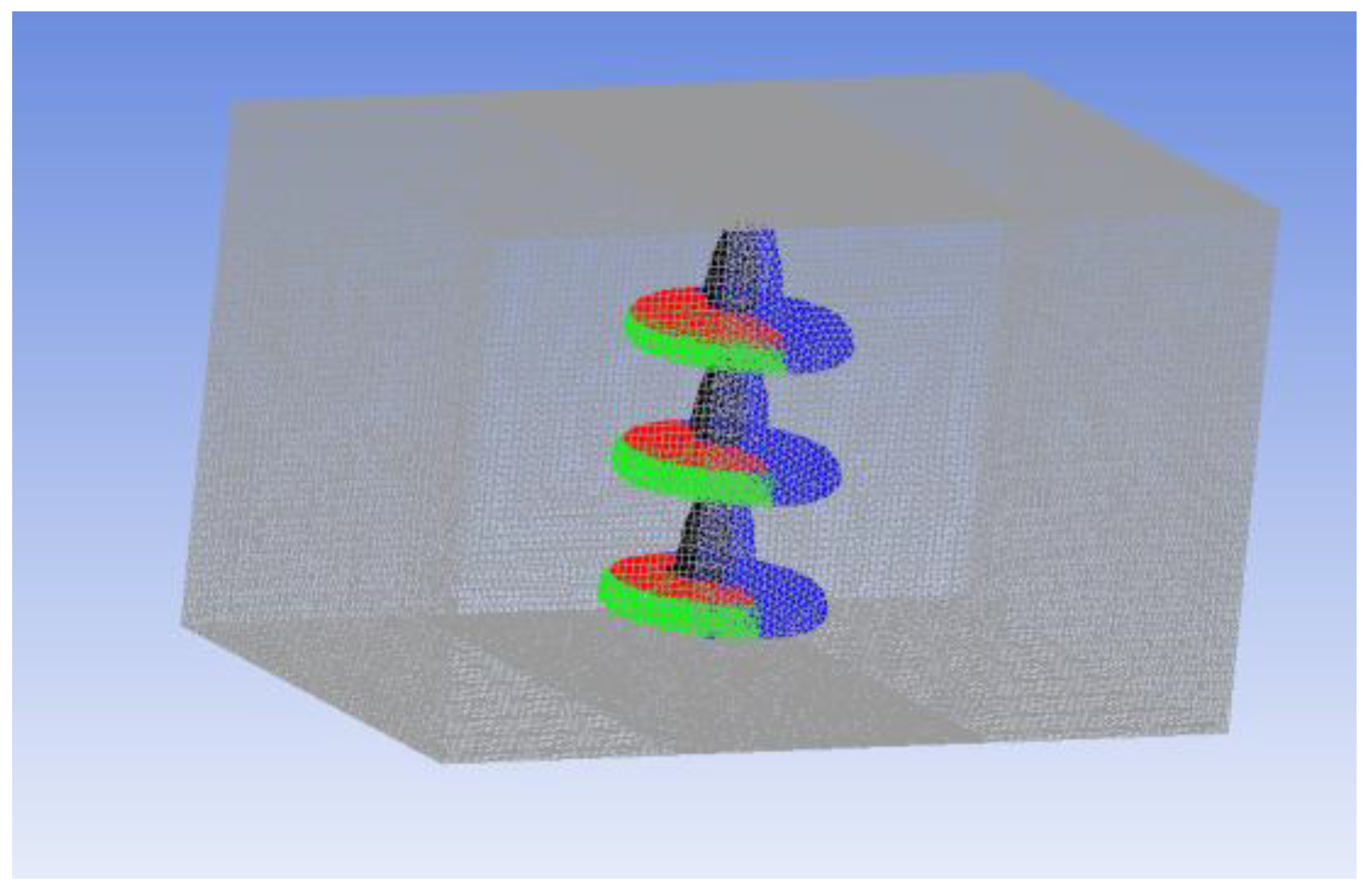
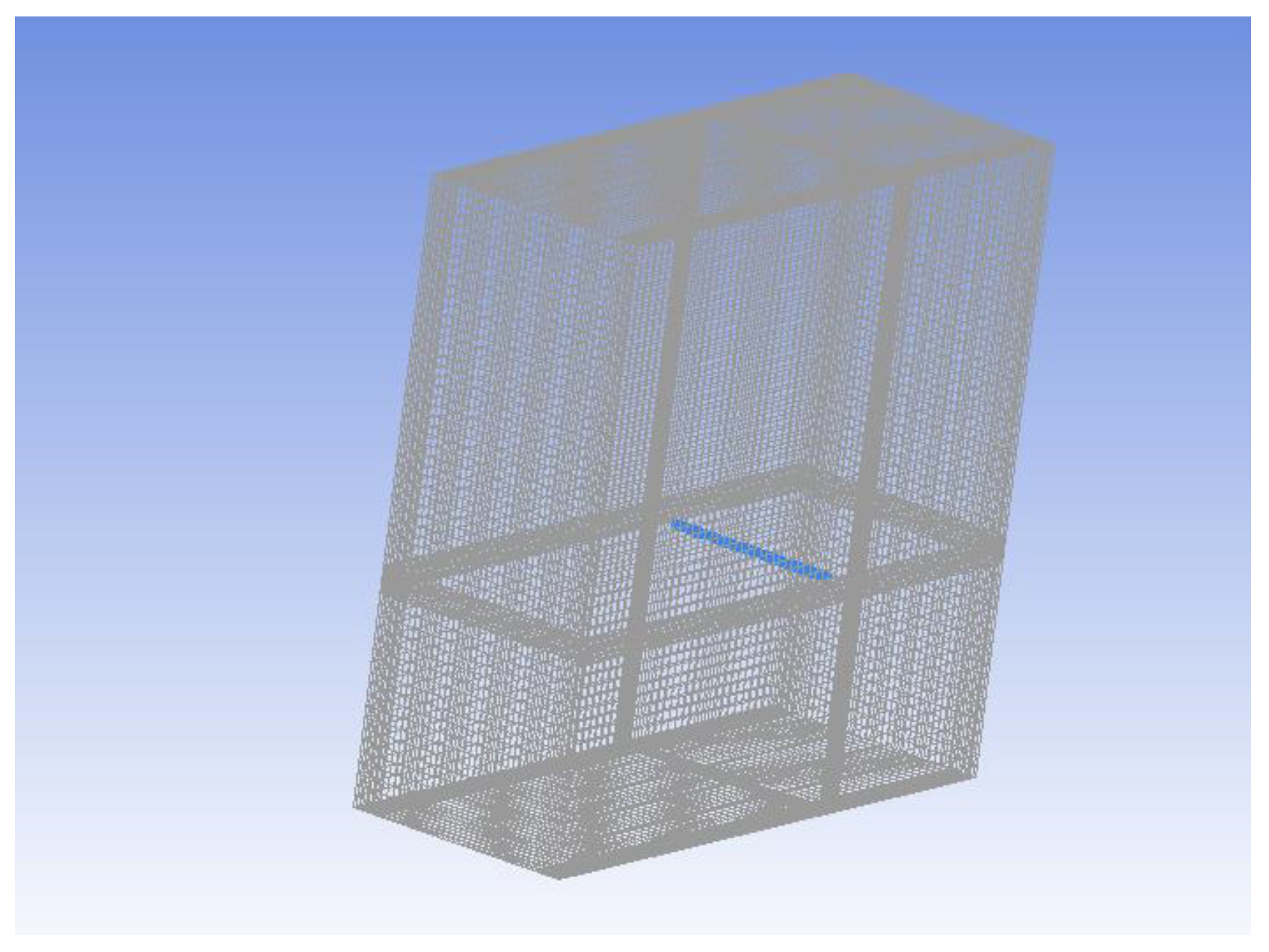

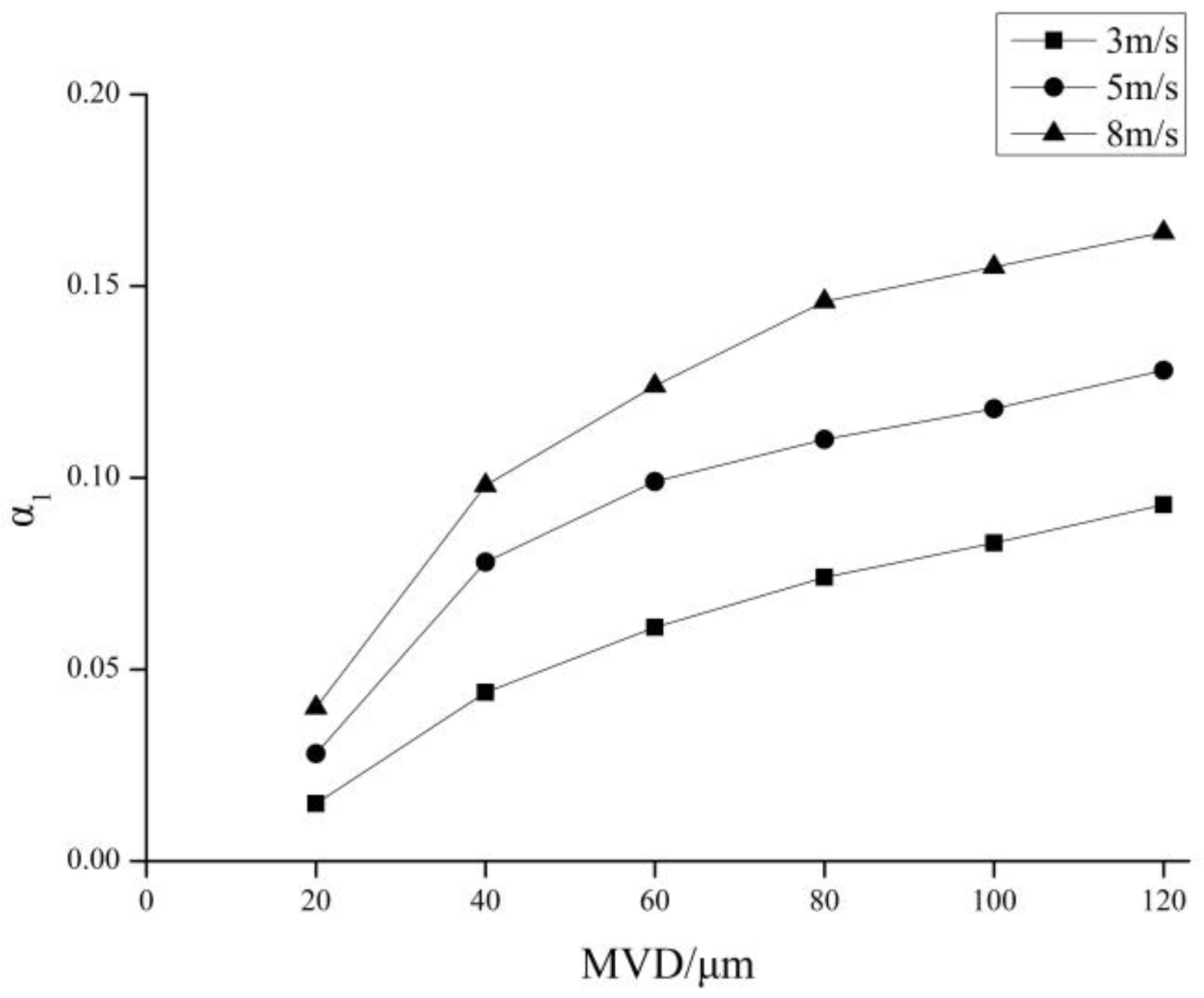
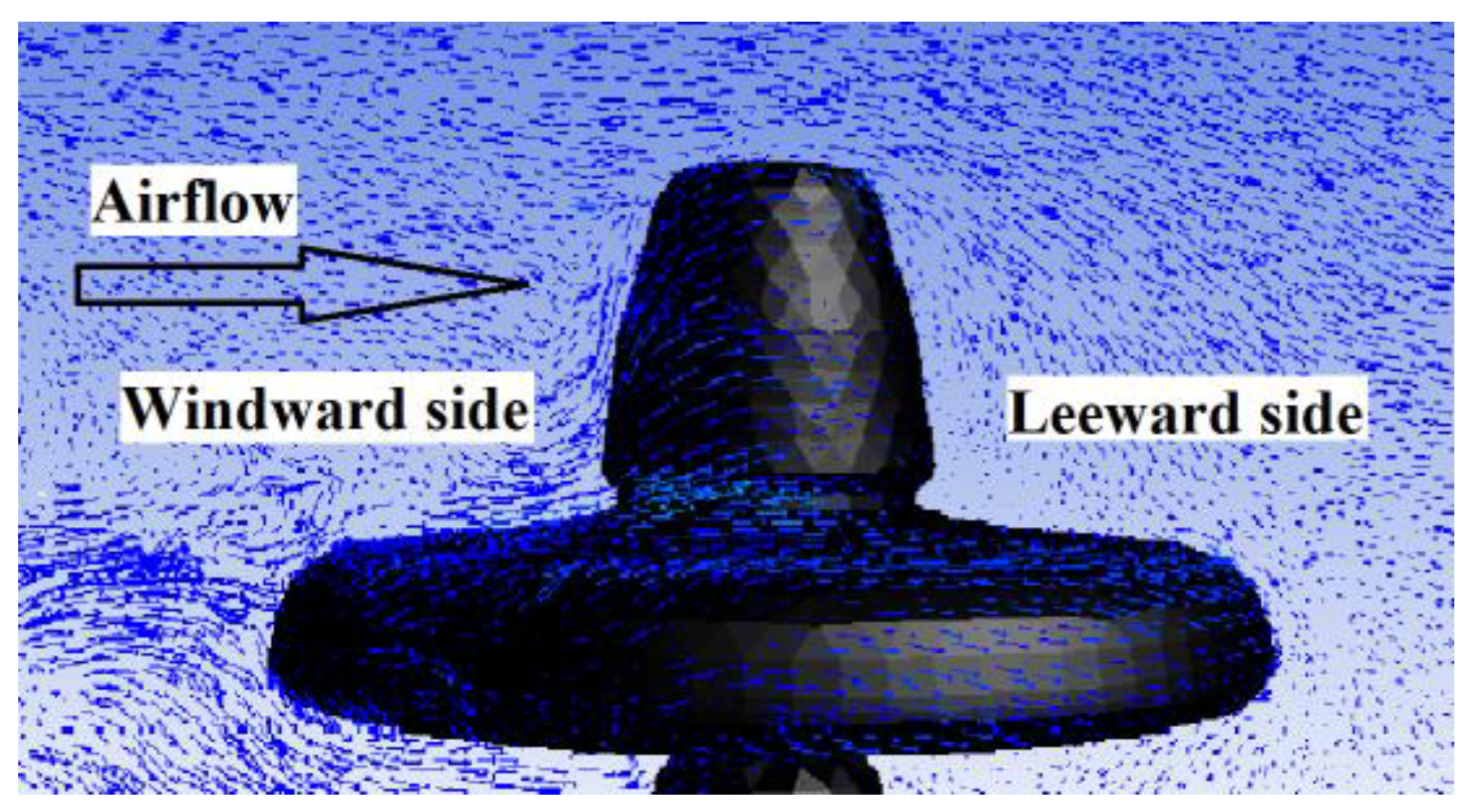
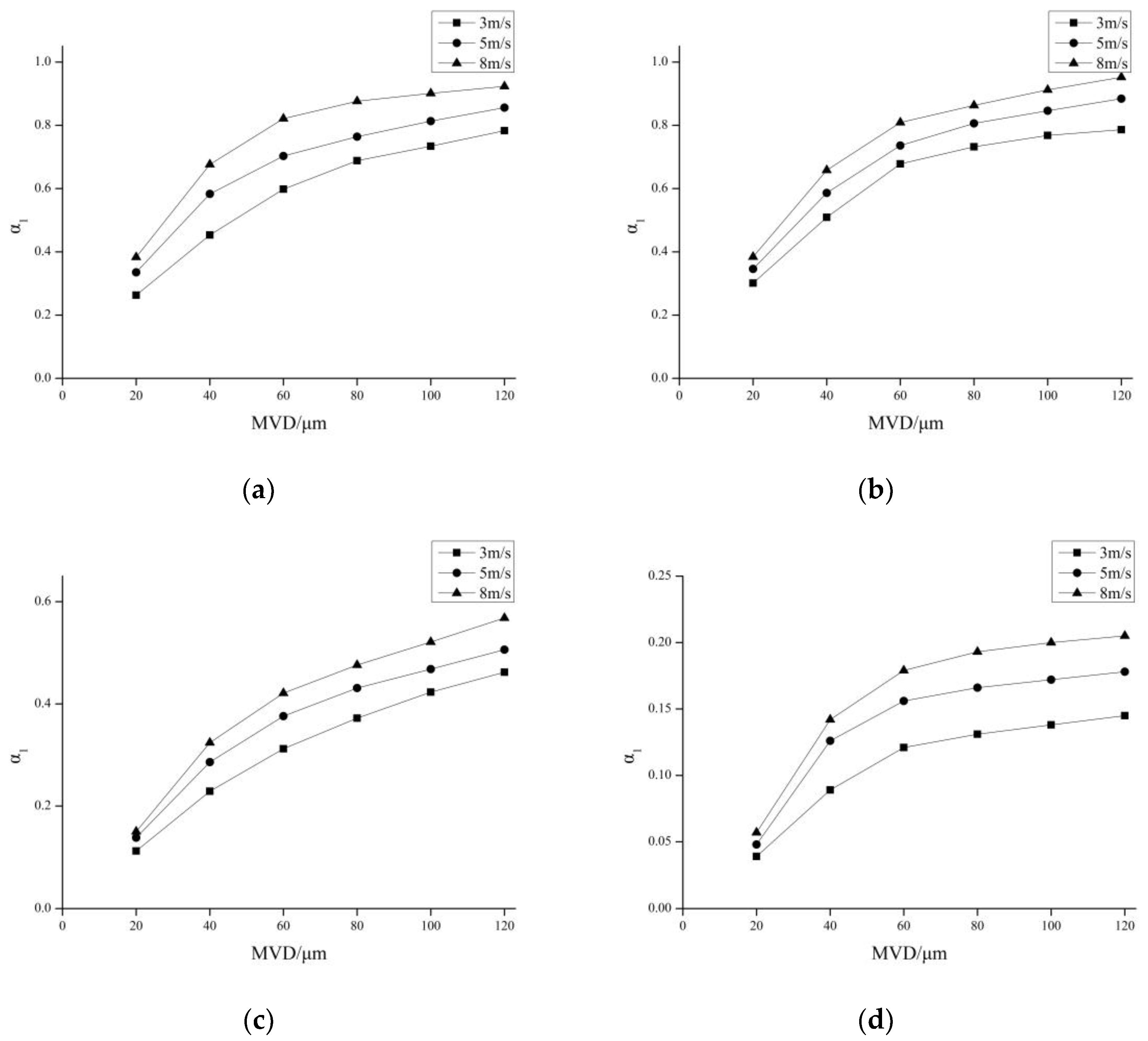




| MVD (μm) | U (m/s) | T (°C) | k1 | |
|---|---|---|---|---|
| In This Paper | Model in [19] | |||
| 20 | 3 | −2 | 4.487 | 7.364 |
| 5 | −2 | 2.329 | 3.213 | |
| 8 | −2 | 1.598 | 1.788 | |
| 40 | 3 | −2 | 2.356 | 2.78 |
| 5 | −2 | 1.505 | 1.235 | |
| 8 | −2 | 1.039 | 0.804 | |
| 60 | 3 | −2 | 2.059 | 2.07 |
| 5 | −2 | 1.328 | 1.007 | |
| 8 | −2 | 0.84 | 0.666 | |
| 80 | 3 | −2 | 1.794 | 1.732 |
| 5 | −2 | 1.203 | 0.92 | |
| 8 | −2 | 0.722 | 0.576 | |
| 100 | 3 | −2 | 1.658 | 1.558 |
| 5 | −2 | 1.127 | 0.869 | |
| 8 | −2 | 0.684 | 0.549 | |
| 3 | −6 | 2.571 | 4.559 | |
| 5 | −6 | 1.873 | 2.547 | |
| 8 | −6 | 1.419 | 1.611 | |
| 3 | −10 | 2.809 | 4.895 | |
| 5 | −10 | 2.289 | 3.821 | |
| 8 | −10 | 1.956 | 2.561 | |
| 120 | 3 | −2 | 1.531 | 1.401 |
| 5 | −2 | 1.044 | 0.809 | |
| 8 | −2 | 0.649 | 0.523 | |
| Ice Structure | U/m/s | Ice Weight/g | ||
|---|---|---|---|---|
| 20 min | 40 min | 60 min | ||
| XP-70 | 3 | 151 | 316 | 480 |
| 5 | 178 | 365 | 546 | |
| Rotating conductor | 3 | 65 | 140 | 198 |
| 5 | 82 | 176 | 259 | |
| Ice Structure | U/m/s | Ice Weight/g | ||
|---|---|---|---|---|
| 20 min | 40 min | 60 min | ||
| XP-70 | 3 | 19 | 51 | 80 |
| Rotating conductor | 3 | 11 | 30 | 44 |
| Ice Structure | U/m/s | Ice Weight/g | ||
|---|---|---|---|---|
| 20 min | 40 min | 60 min | ||
| XP-70 | 3 | 176 | 380 | 580 |
| Rotating conductor | 3 | 69 | 147 | 220 |
© 2018 by the authors. Licensee MDPI, Basel, Switzerland. This article is an open access article distributed under the terms and conditions of the Creative Commons Attribution (CC BY) license (http://creativecommons.org/licenses/by/4.0/).
Share and Cite
Zhang, Z.; Zhang, Y.; Jiang, X.; Hu, J.; Hu, Q. Icing Degree Characterization of Insulators Based on the Equivalent Collision Coefficient of Standard Rotating Conductors. Energies 2018, 11, 3326. https://doi.org/10.3390/en11123326
Zhang Z, Zhang Y, Jiang X, Hu J, Hu Q. Icing Degree Characterization of Insulators Based on the Equivalent Collision Coefficient of Standard Rotating Conductors. Energies. 2018; 11(12):3326. https://doi.org/10.3390/en11123326
Chicago/Turabian StyleZhang, Zhijin, Yi Zhang, Xingliang Jiang, Jianlin Hu, and Qin Hu. 2018. "Icing Degree Characterization of Insulators Based on the Equivalent Collision Coefficient of Standard Rotating Conductors" Energies 11, no. 12: 3326. https://doi.org/10.3390/en11123326




